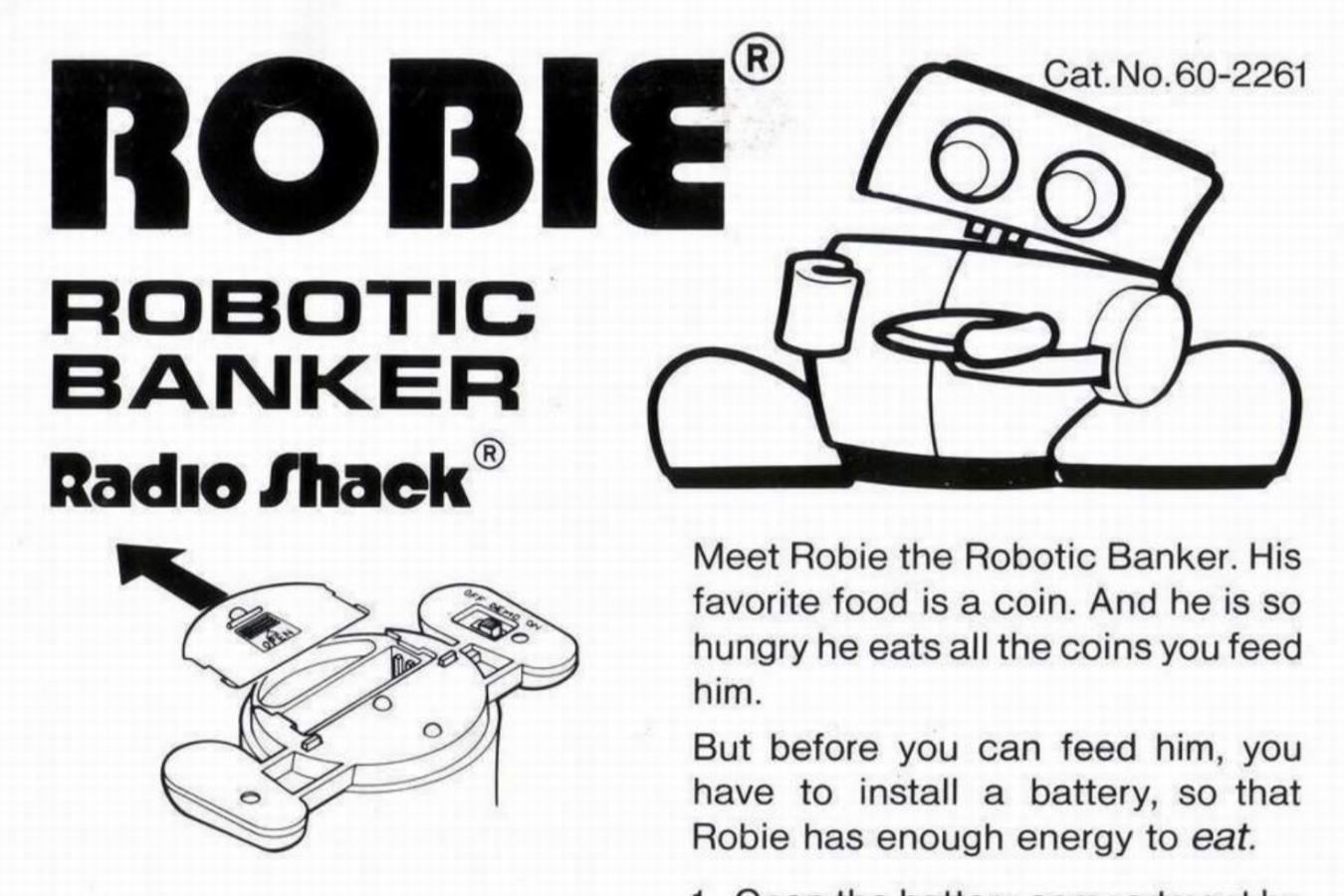The year was 1994. The occasion was my family’s Christmas gathering. I tore off the wrapping paper from a rather nondescript box from my grandma to reveal a mysterious product. “Robie the Banker,” it read on the box, with an illustration of a pale yellow, stubby, coin-eating robot. After slapping a AA battery in it and flipping the power switch, I was forever enthralled.
Or at least that’s how my mom described the situation to me—I was only five at the time and barely remember the occasion. But Robie the Banker is one of the very few toys I still have from my childhood, along with my Game Boy. And it still works.
An Abbreviated History of Robie the Banker
Robie the Banker is an electronic piggy bank in the form of a friendly robot who eats coins. You place a coin on its left arm and gently press it down. From there, Robie lifts his arm, gulps down the coin, does a little dance, and licks his lips. It was the focal point of our family Christmas gathering that year, for sure.

According to its US patent, Robie was invented by Hiroshi Horiuchi and originally released in the early 1980s by Japanese toy company Tomy (known as Takara Tomy in Japan). You may not recognize that name, but they created the era-defining Transformers toy line in 1984.
Robie was originally named Mr. Money, but RadioShack purchased distribution rights in the US and renamed the robotic coin bank to Robie.
Robie wasn’t RadioShack’s only robotic banker, either. The company also made a rather less-fun robotic coin bank, resembling a robotic arm (albeit a very slow-moving one) that would pick up a coin and place it in the coin slot for safekeeping.

RadioShack also used the Robie name for a small line of different robot toys (also created by Tomy under the Omnibot name), including Robie Junior, Robie Sr., and Talking Robie.
Robie the Banker Taught Me About Saving Money
Robie just wasn’t a fun toy that I played with as a kid. It also taught me a valuable financial lesson that would become beneficial to me as I grew older. The fun little dance that Robie did every time I fed him a coin subconsciously demonstrated the money-saving process to me.

Image credit: my mom
I would lie on the floor and feed Robie one coin at a time for a half-hour or so. Then, I’d open up the bottom lid and watch all of the coins spill out onto the floor with a shocked look on my face. Robie showed me that if I put away a quarter every now and then, it would eventually add up to a lot of quarters. And from there, I could cash in those quarters and buy something nice for myself.
It led me to save up for my very first “big” purchase a few years later: a brand new Nintendo 64, which was priced at $99 at the time—competition from the PlayStation forced Nintendo into dropping the price of the N64 by 50% since its initial launch.
$99 for a gaming console seems incredibly cheap, but that was a lot of money for me when I was ten years old. It was a months-long journey of saving my allowance and being frugal with my toy and candy purchases. Finally, I had enough cash saved up to head to the nearest big-box retailer. I watched with feverish excitement as the retail employee unlocked the electronics cabinet and handed me a freshly-sealed Nintendo 64 console.
Tearing Down Robie the Banker

I still have my original Robie the Banker coin bank, and I recently took it out of storage for nostalgia’s sake. However, instead of saving my spare change, I took it apart, because the five year old in me now wanted to know how it worked.
Unsurprisingly, this robot is a pretty simple piece of machinery, with gears, levers, and servo motors doing all the work. Pushing down on Robie’s left arm connects two metal contacts on the inside, thus completing the circuit and starting the programmed sequence of events, as explained in the teardown linked below!
Tearing down Robie the Banker was a fun exploration, and I encourage you to tear down old childhood toys that you may never have thought to look inside—technology is a lot more than laptops and phones!
I put Robie back together and it’s now sitting on my desk at work, periodically reminding me that hard work and patience pays off. And sometimes I’ll activate his arm just to see him do his little dance for kicks.






0 Comments